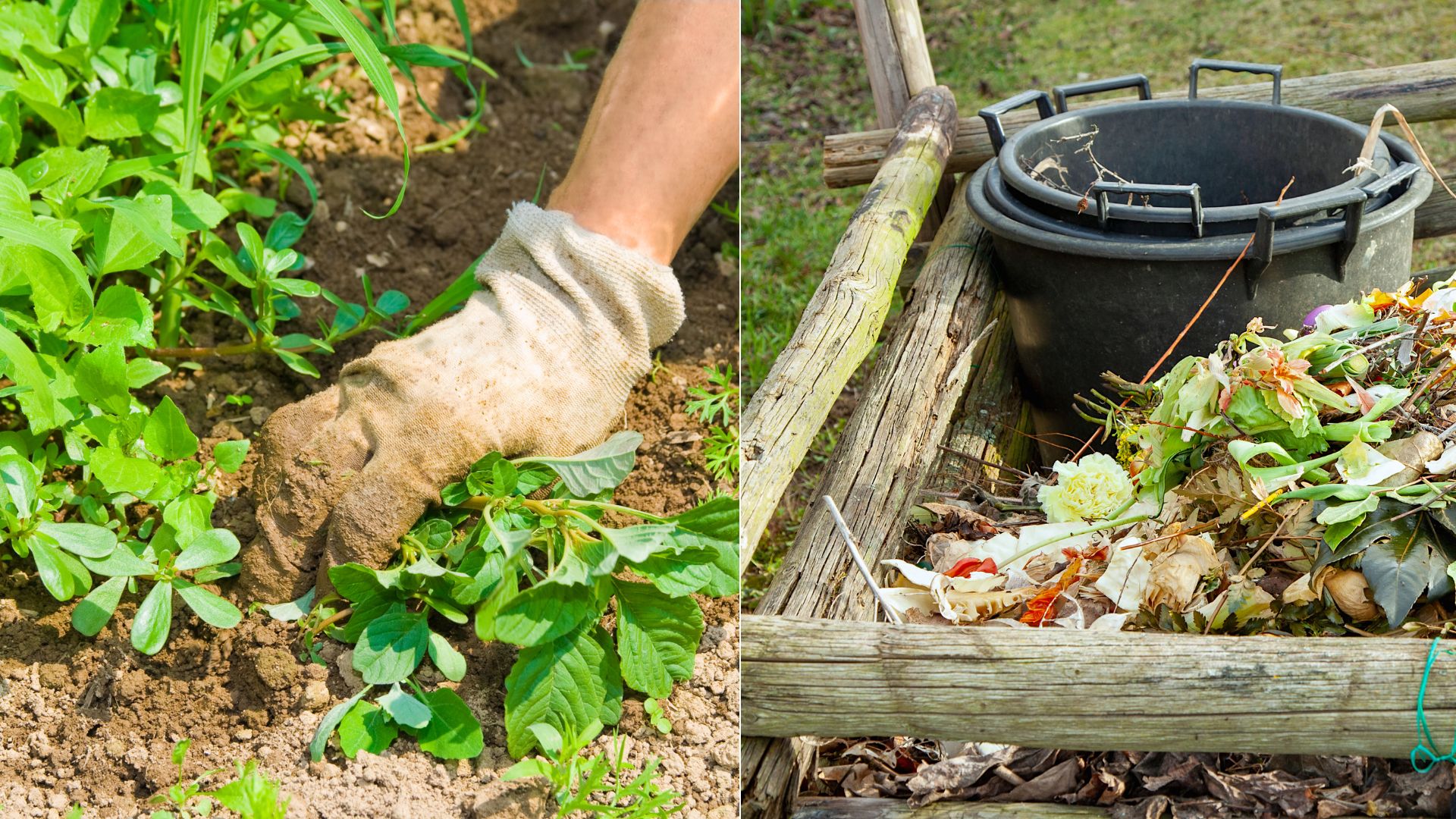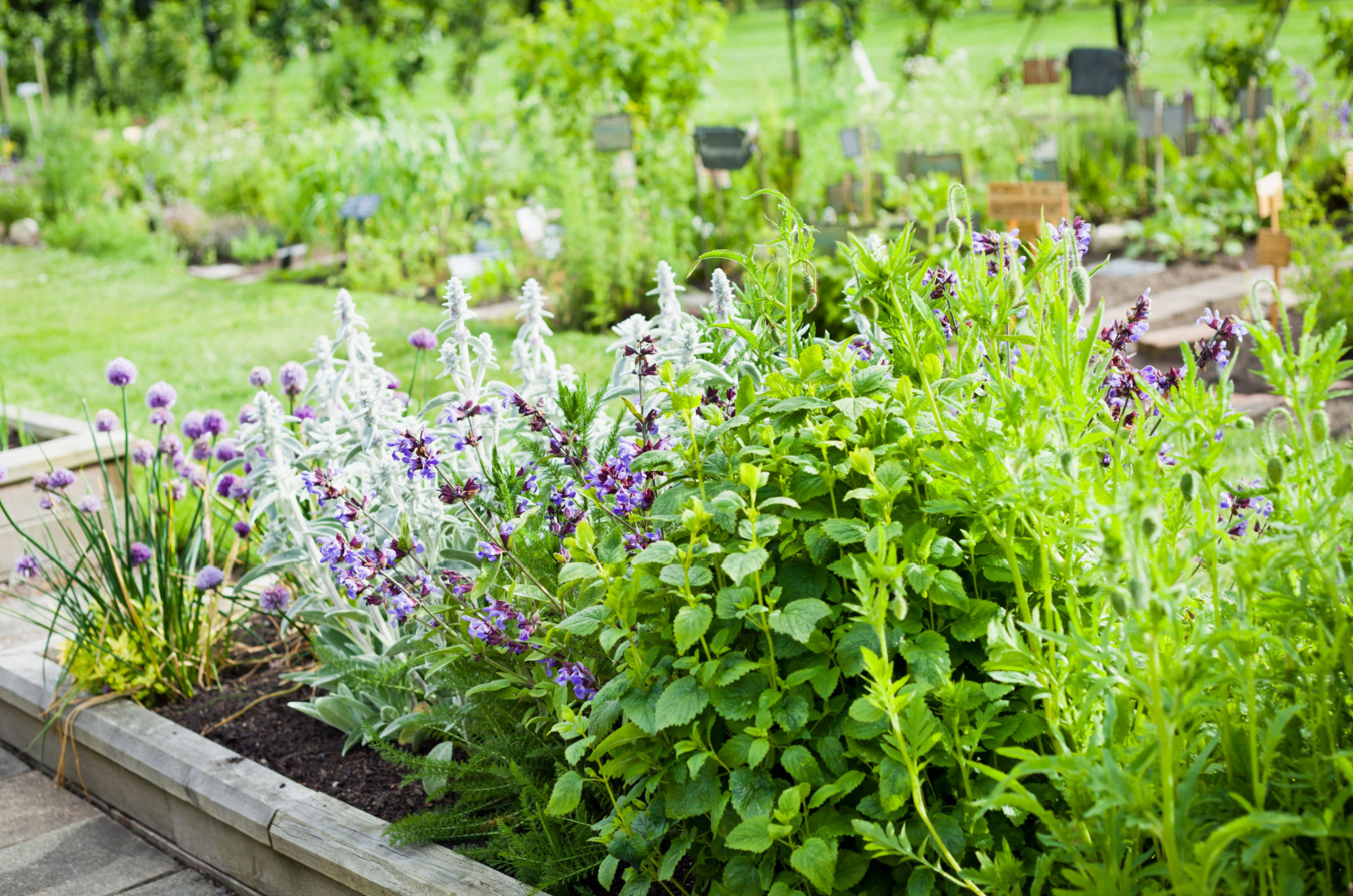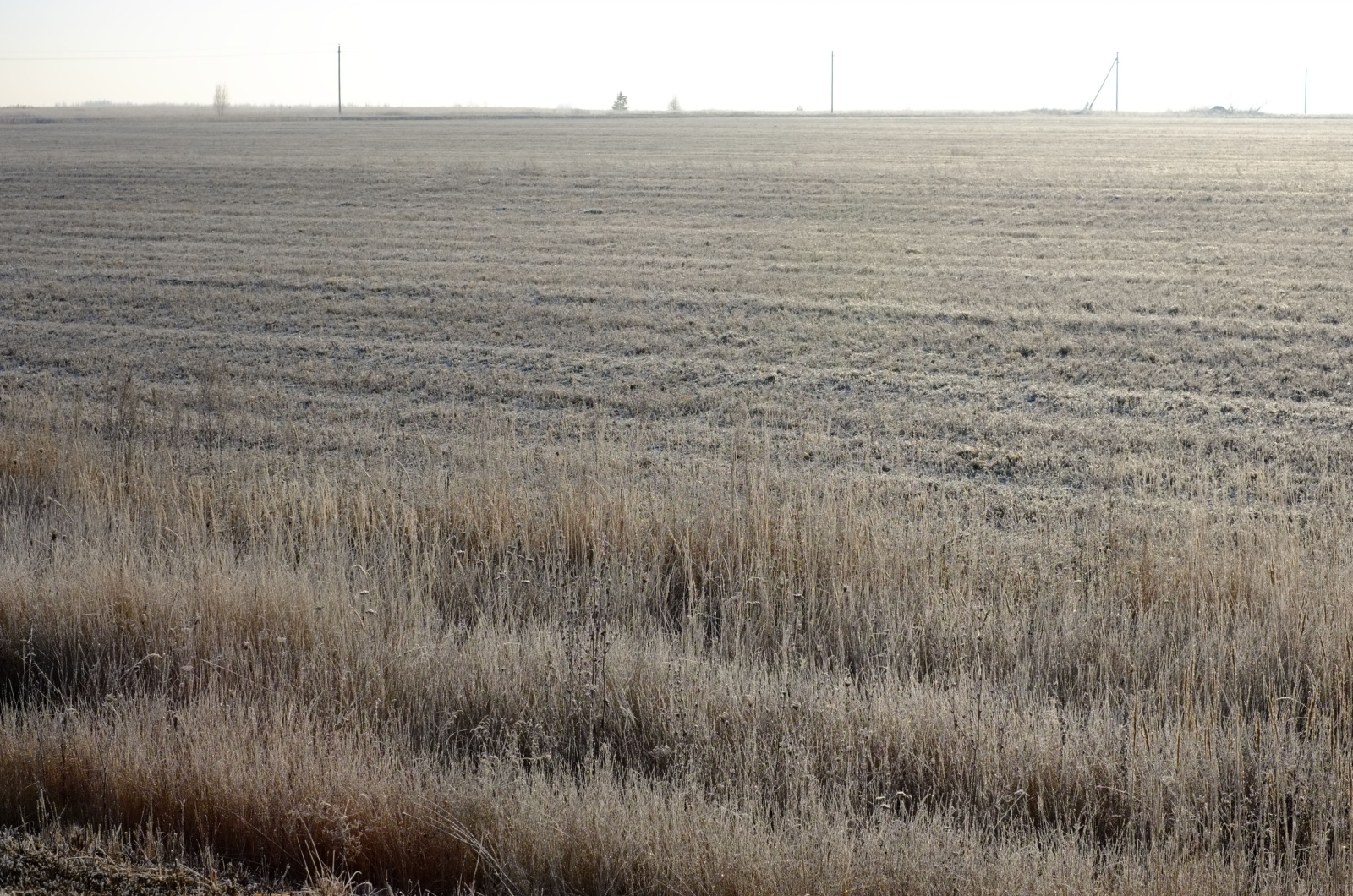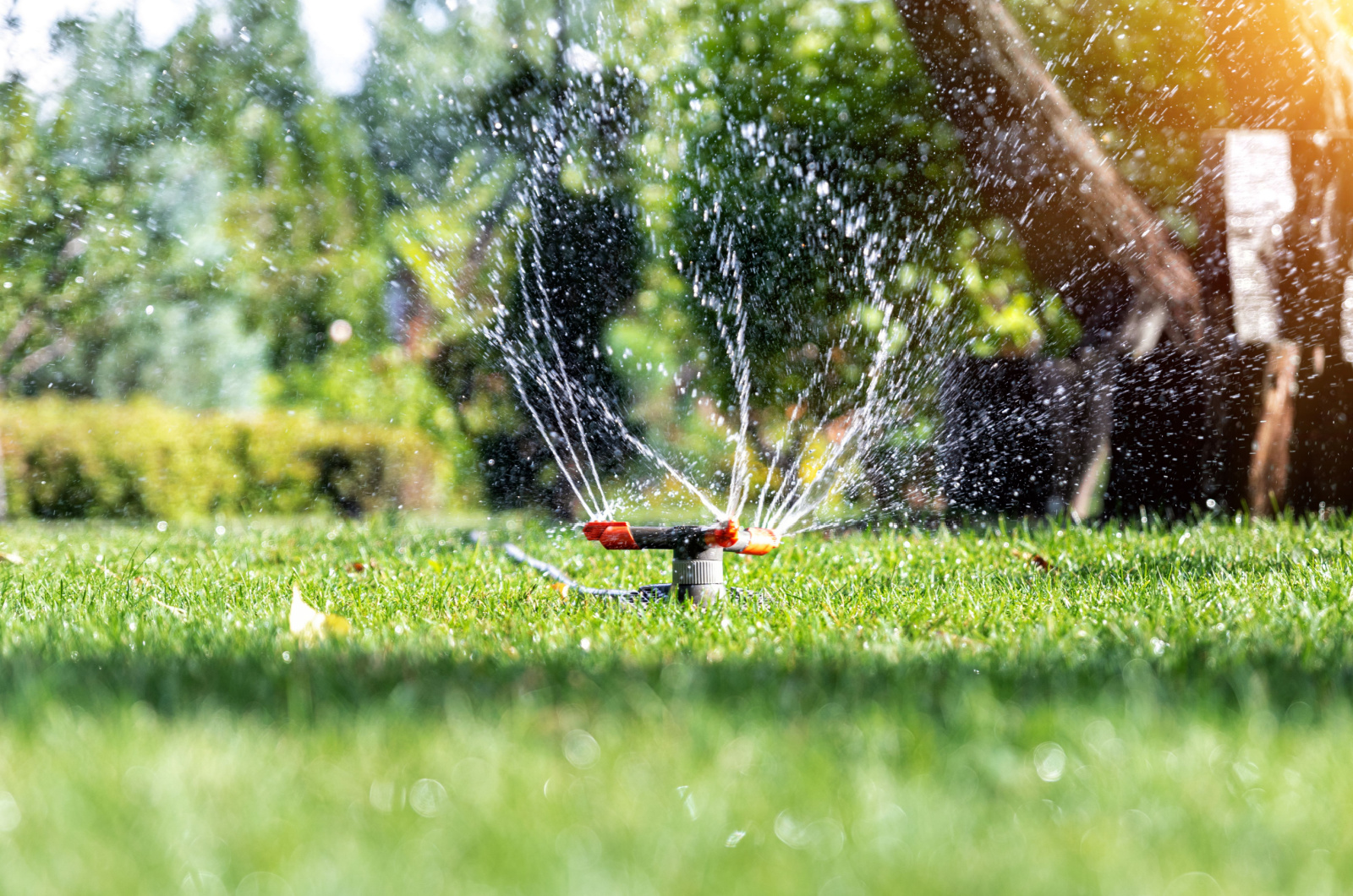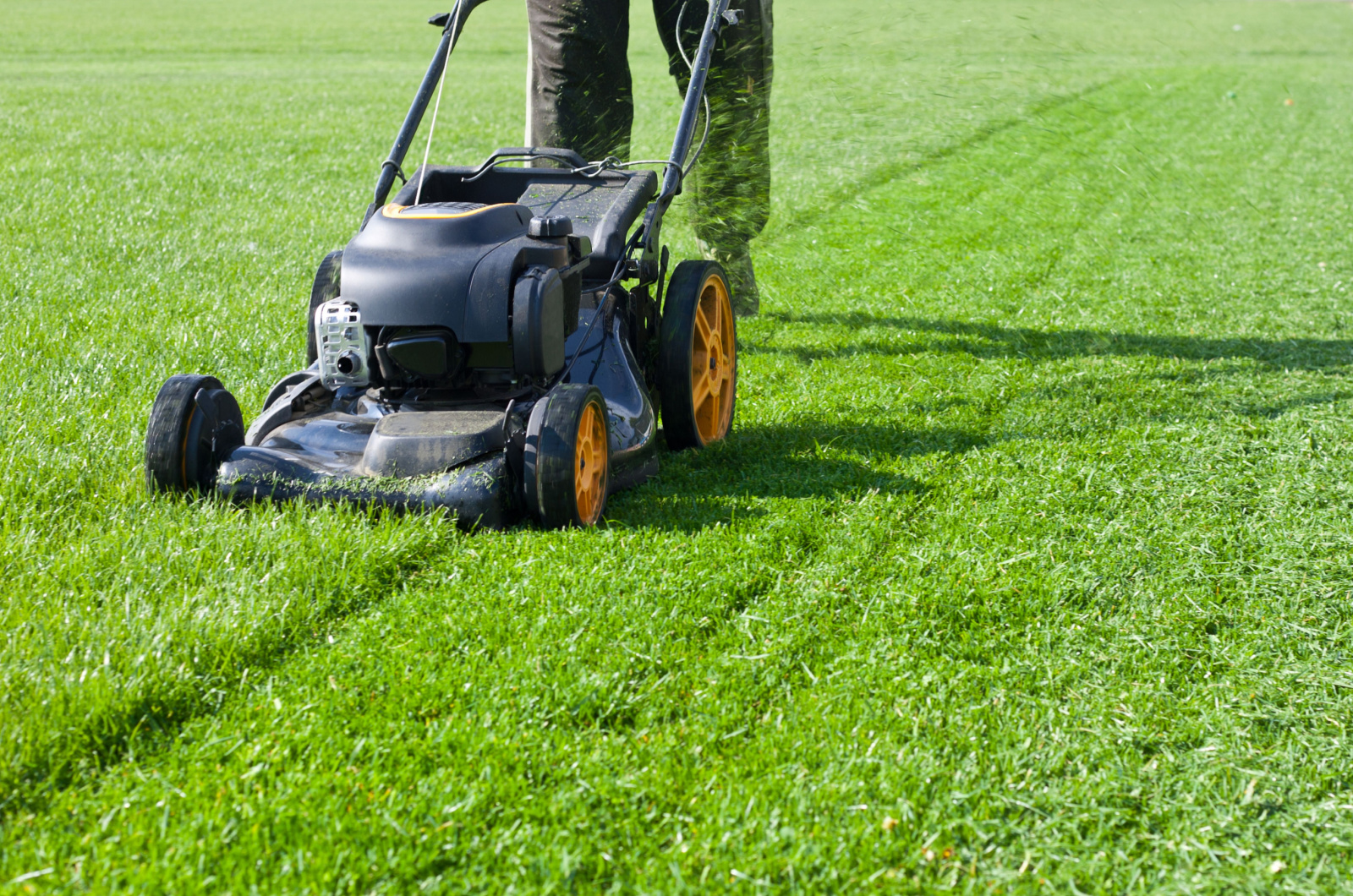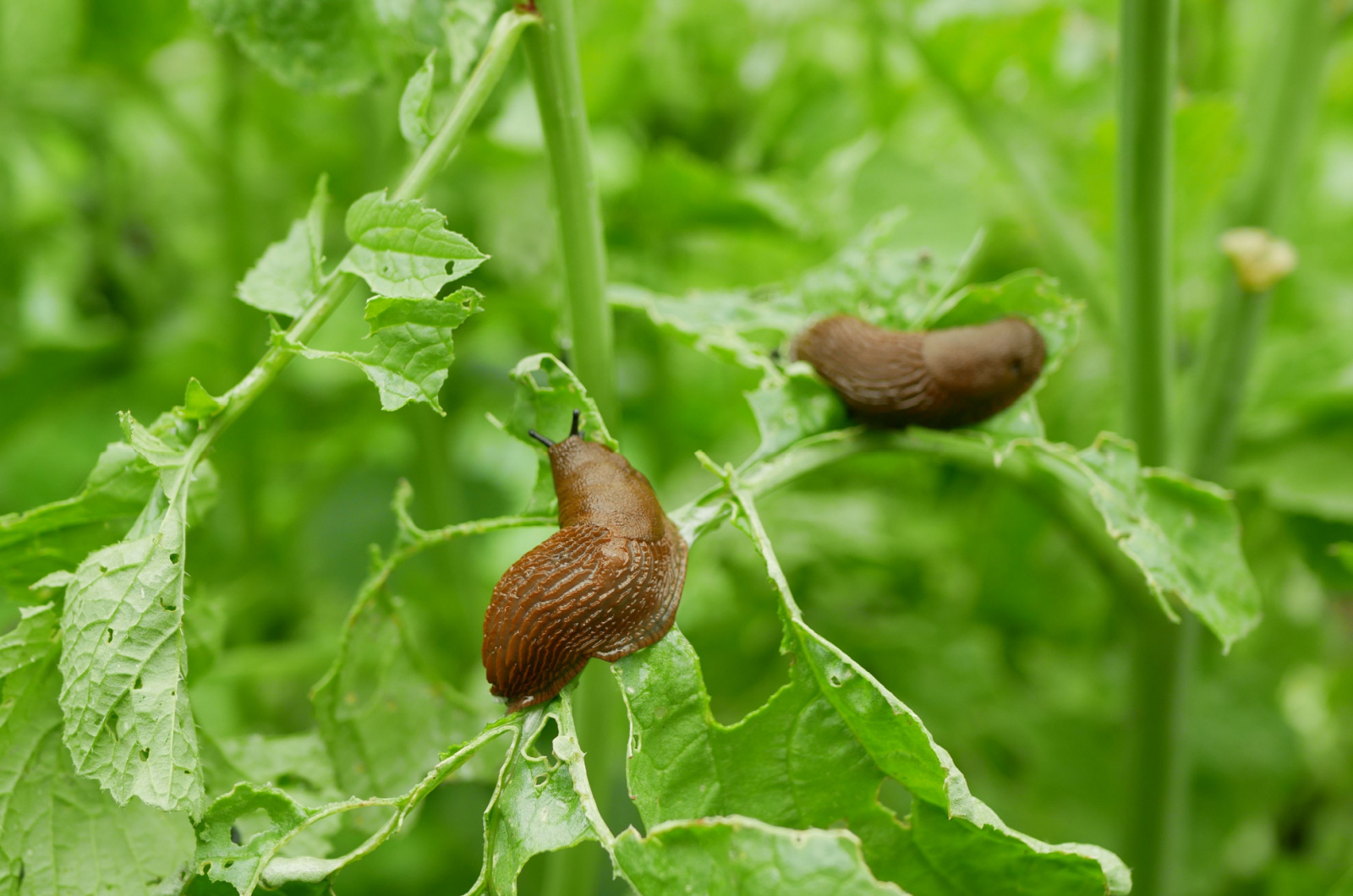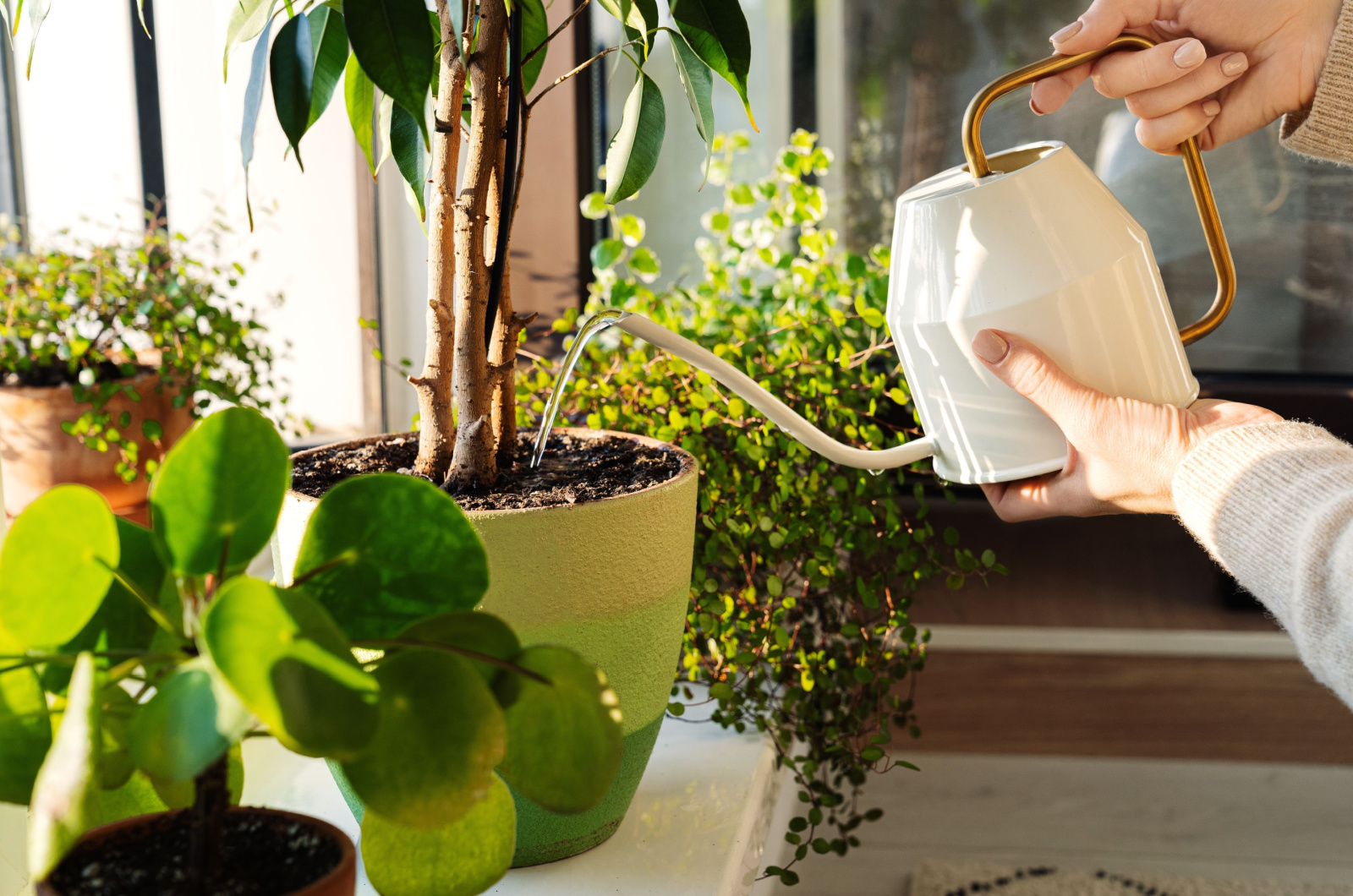You can use every last summer second to get the thriving garden you’ve dreamed of and prepare it for fall.
That means shifting to cool-season veggies and fall flowers, mowing your lawn, getting rid of weeds and pests, checking on your compost pile and watering systems, etc.
Of course, you shouldn’t forget about your houseplants during this time!
Here are some end-of-summer tips that will yield you thriving indoor and outdoor gardens in no time!
Planting
August is the perfect time to shift to a fall garden, and that means growing herbs, flowers, and veggies that can grow during this season.
1. Grow Herbs
There are many herb garden ideas you can implement, such as container gardening, mixing them with flowers and in perennial beds, etc.
But some of the most important things to bear in mind include planting them in well-drained substrate and placing them in a location where they can get at least 6-8 hours of direct sunlight each day.
Plant dill, chervil, chives, cilantro, and basil, let them establish, and harvest their leaves whenever you need to add more flavor to your salads or pasta dishes.
2. Plant Flowers For Fall
You can plant ‘October Skies’ aromatic aster, dahlias, pansies, and chrysanthemums for more color during fall.
Add them to your flower beds or plant them in containers. Ceramic and terracotta pots can break during winter because the accumulated water freezes and expands.
To avoid this, make sure your planters have drainage holes and keep them on pot feet to allow the excess moisture to drain.
3. Sow Cool-Weather Crops
The end of summer is the perfect time to sow some cool-weather crops and enjoy their fruits in fall.
Broccoli, winter cabbage, carrots, beets, turnips, and other cool-season root crops are perfect for planting this time of year.
Plant them in a nutrient-rich and well-drained soil and a location that gets plenty of sunlight.
Maintenance
Maintenance is an important part of gardening. That includes taking care of plants, yes, but also making sure your entire garden system is in order.
This includes weeding, mowing, hand-pollinating, composting, and even checking your irrigation systems to see if everything works as it should.
1. Start A Compost Pile
There’s a home composting guide that can help you make your own black gold in as little time as possible.
This will allow you to reduce the amount of waste you send to the landfill and save some money on fertilizers.
P.S. You can start a small compost heap in a spot where you want to plant a tree or a shrub the following spring. This will ensure the roots get plenty of nutrients and make the soil workable.
2. Get Rid Of Weeds
You can pull those pesky weeds by hand or make a simple weed killer recipe with vinegar and salt that will get rid of them for good.
Just make sure not to use this concoction near your plants or lawn as it may hurt them as well. However, it’s perfect for gravel and stone pathways.
3. Check Your Watering System
If you have set up a DIY automatic watering system in your yard, you should check it regularly for any leaks.
This not only wastes water, but can put your plants in harm’s way and significantly increase the risk of root rot.
And since they drip slowly, you may not notice that something is wrong with your plants until it’s too late.
4. Start Hand-Pollinating
Hand pollination will maximize your yield, especially if you don’t have many native pollinators in your garden.
Take a Q-tip or a paintbrush, dip it into the pollen of the male flower, and transfer it onto the female one.
5. Lawn Mowing Tips
There are a couple of things you can do to keep your lawn luscious and green (or allow it to become that as it wakes from summer dormancy).
Slightly raise the cutting height of your mower and taller grass blades will reduce moisture evaporation and keep the roots cooler.
Mow your lawn in the cool of the evening to make sure it recovers faster.
You should also start overseeding your lawn in August or September and water it early in the morning or in the evening.
Protection
If you want a healthy and thriving garden, keep your plants safe from pests, diseases, and sunburns all the time, including at the end of summer.
1. Get Rid Of Pests
Remove spider mites, aphids, and whiteflies as soon as they appear on your houseplants and veggies because they can cause serious harm if neglected for a long time.
Use horticultural oils or stronger insecticides if needed.
You should also keep slugs away from your plants by using aluminum foil or some other method to prevent them from nibbling your veggies.
2. Remove Diseased Foliage
If you notice yellow, brown, or black leaves on your flowers and veggies, remove them as soon as possible.
These signs may indicate some fungal disease, such as fusarium wilt, which can quickly spread in your garden.
And even if foliage is yellow due to sunburn, you should prune it because it wastes the plant’s energy, resulting in less new growth.
3. Keep Your Houseplants Safe
And don’t forget about your houseplants! Make sure to water them whenever the top few inches of topsoil is dry (or less frequently if you have succulents and cactuses).
Also, move them a couple of feet away from bright windows if you notice that their leaf tips and margins have started to turn brown. And if you have tropical plants (which are the most common houseplants out there), make sure to keep the humidity above 50%.

